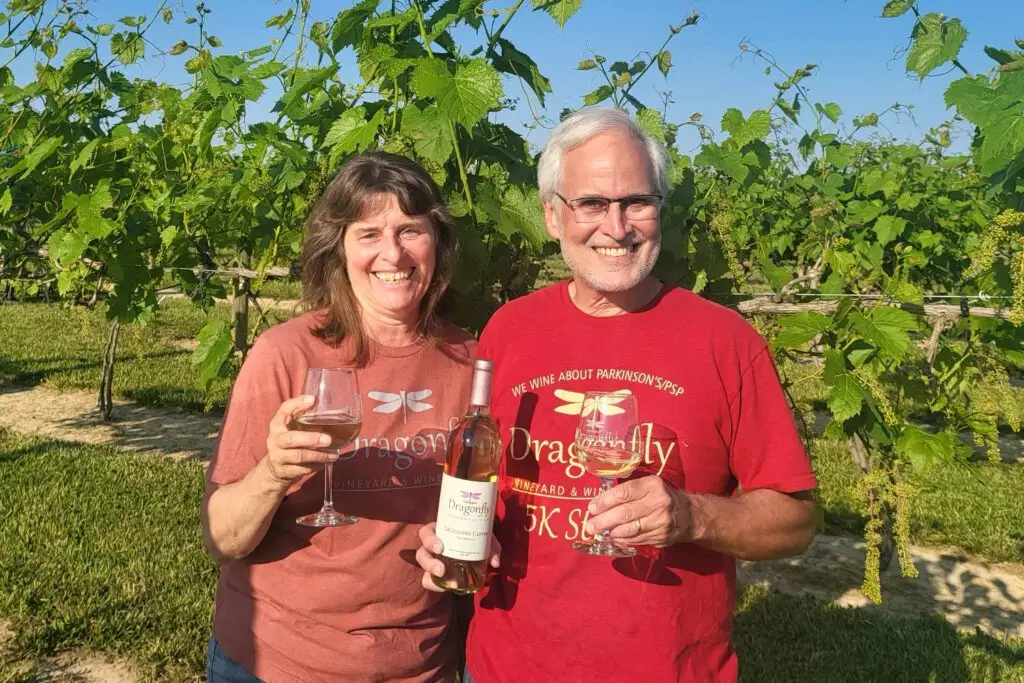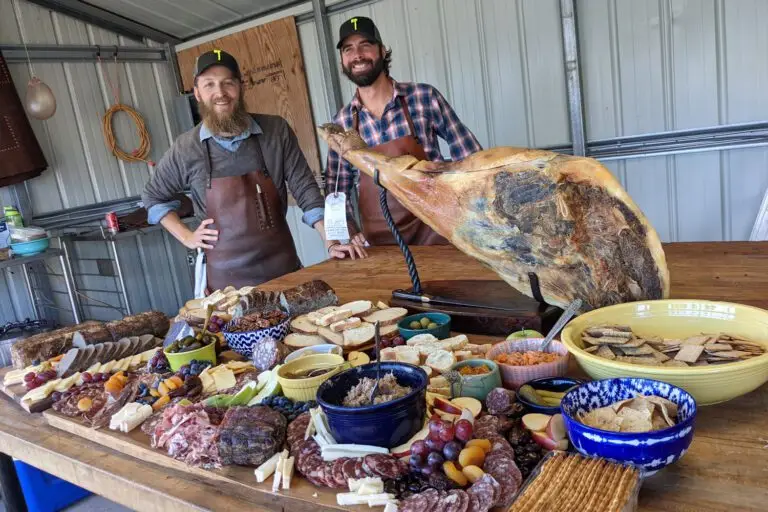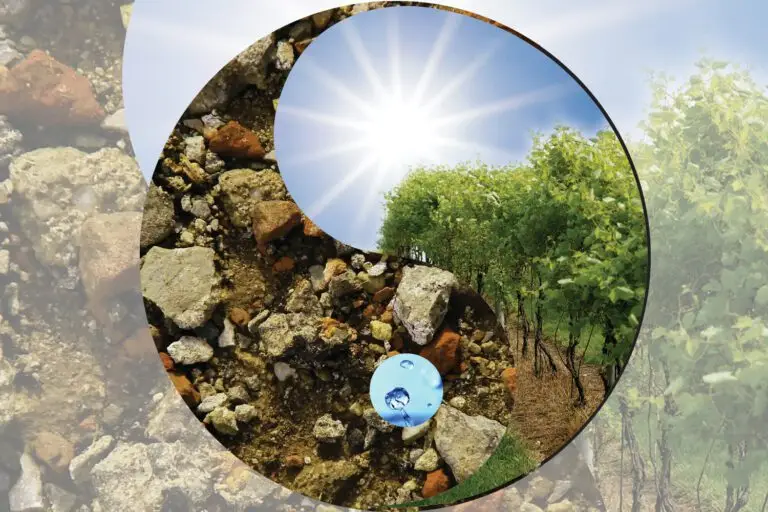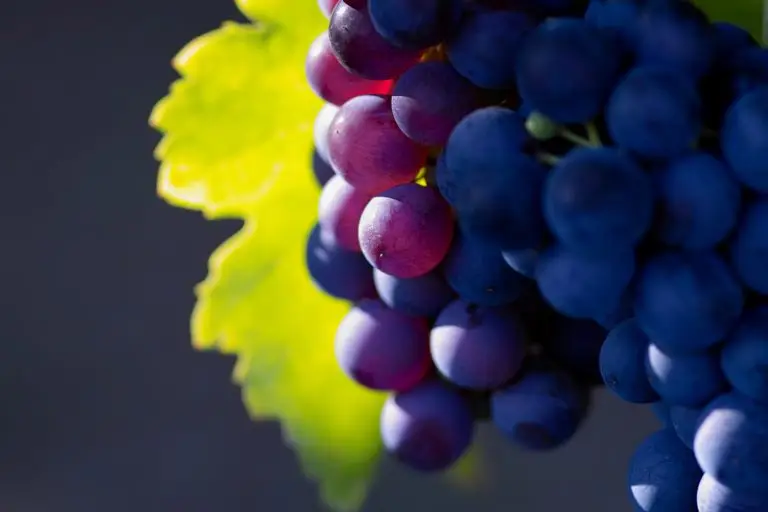The 2023 Ohio Grape Harvest
Harvest is the compilation of all the environmental factors of a growing season. Grape growers and winemakers are confronted with different growing conditions each year, and they respond by utilizing various vineyard management techniques – such as leaf pulling for increased sunlight penetration and adjusting crop loads – to help ensure fruit ripeness.
Ohio’s growing conditions vary based on the vineyard location. European varieties (vitis vinifera) such as Chardonnay, Pinot Grigio, Riesling, Pinot Noir, need mild or lake-moderated winters to survive. Native grapes (vitis labrusca) like Concord and Catawba, are fairly well-adapted to Ohio winters. French/American hybrid grapes (Chambourcin, Niagara, Traminette), are also cold-hardy and offer excellent wine quality.
In their own words, growers and winemakers from different parts of Ohio describe the impact of 2023 growing conditions on their harvests.
VINES & WINES
Proximity to Lake Erie as well as the Grand River impacts the climate for the Lake Erie AVA (American Viticultural Area) and the Grand River Valley AVA. The effective circulation of warmer air in both these areas reduces the threat of frost in the spring and extends the growing season. Vineyards closest to Lake Erie grow in sandy soil, while those nearer the Grand River spread their roots in primarily gray clay.
Buccia Vineyards Winery and Bed & Breakfast, Conneaut
Bill Holden, Owner and Winemaker
“2023 offered fewer degree days overall (less heat accumulation) and the Canadian forest fire smoke reduced early season sun and heat. It was a nice–sized crop with clean fruit due to the Labor Day and September warming, which also helped with ripeness and flavor development. Our reds came in with good color/astringency levels and the fruit tasted quite good. We are excited about all the wines from the vintage.”
www.bucciavineyards.com
Ferrante Winery & Ristorante, Geneva
Nick Ferrante, Owner and Winemaker
“2023 offered a nice crop of clean fruit, so we did skin contact to a portion of our whites to give more body, depth, aroma and complexity to the final wines. More heat would have benefitted the red grapes, though we used fruit with lower ripeness to maintain our sparkling wine production. Vintage yields were moderate, but wines show attractive levels of acids and flavors. I am happy overall.”
www.ferrantewinery.com
LAKE ERIE SHORES & ISLANDS
This is where Lake Erie is at its shallowest, causing cooler winters, higher summer temperatures, and an extended growing season. Sandusky has marl (a soft, light-colored soil) with limestone and clay beneath. Soils near Lorain consist of silty clay loam in the first 6-8 inches, then a foot of heavy clay over blue shale.
Firelands Winery, Sandusky
Lenny Kromer, Director of Hospitality
“In 2023 we had a damp spring and a hot and humid summer. The humidity and rain challenged our getting equipment into the vineyard and waiting longer for the grape sugars to increase, which reduced our yields. We would have wished for a drier year without ripeness and vineyard management challenges.”
www.firelandswinery.com
Klingshirn Winery, Avon Lake
Lee Klingshirn, Owner and Winemaker
“Our premium vinifera varieties came in as good as average, however the Concords never fully ripened, a common issue. Precipitation in the late season, especially 6 inches in 24 hours in August, set back the ripening, splitting the fruit mandating immediate harvest. The Canadian wildfires didn’t affect our crop. A challenging year but it was manageable.”
www.klingshirnwine.com
CANAL COUNTRY
With adequate heat, rain and fertile soils, this region can grow vines large enough to support and ripen above-average sized crops. Without Lake Erie’s moderation the winters are quite challenging.
Gervasi Vineyard Resort & Spa, Canton
David Smith, Winemaker
“2023 was a much cooler year that necessitated we wait longer to harvest our fruit. Longer time on the vine resulting in different flavors and aromas; the whites are focused on stone and pome fruit rather than tropical notes. Disease pressure was low and fruit bloom and set occurred during perfect weather, so our yields were good with the nicest vintages we have had for fruit quality.”
www.gervasivineyard.com
Breitenbach Wine Cellar & Vineyards, Dover
Duke Bixler, Owner
“We are pretty happy with our 2023s. With good airflow, higher altitudes and our vines orientated north to south, we had warmer conditions than surrounding areas. Our vineyards are located in an amphitheater that pushes warm air upward, protecting our sites from early or late freezes which would have killed numerous buds. We had no challenges with disease pressure. Our hybrids and Catawba did well this vintage.”
www.breitenbachwines.com
CENTRAL OHIO
This region experiences harsh winters, so the focus is on growing hybrid and labrusca varieties that are cold-tolerant. The soil is low in clay content, so it’s well-drained, loamy and high in organic content.
Dragonfly Vineyard & Wine Cellar, Urbana
Kent and Connie Eichenauer, Owners
“2023 was pretty good, except winter killed our 2023 Cabernet Franc buds. Vidal was looking really good, and the yield was very large, so we left up to a half-acre hang for our initial Ice Wine release. Yields overall were a bit better than in recent years. Disease pressure was minimal, birds offered a bit of a challenge. We have no complaints about the vintage.”
www.dragonflyvineyard.com
OHIO RIVER VALLEY
Moderated by the Ohio and Great Miami rivers, this region enjoys slightly warmer temperatures and milder winters than the north. Soils are typically heavy clay.
Vinoklet Winery & Restaurant, Cincinnati
Greg Fischesser, Winemaker
“Our vines in 2023 were new – averaging three to five years old – so we were anticipating lower yields. Though our grape bunches looked good, harvest was pretty hot and humid. We focused on getting our fruit into fermentation vats quickly due to the potential for oxidation. Disease pressure was minimal. All in all, not a perfect harvest but some nice wines were made.”
www.vinokletwines.com
APPALACHIAN
Hot, humid summers and very cold winters are typical. Mulching with straw near the base of cold-hardy grapevines protects them from winter damage.
Hocking Hills Winery, Logan
Blaine Davidson, CEO
“What we did harvest in 2023 was quite good and we are happy with the quality. Our Petite Pearl was very nice. There was not much disease or Japanese beetle pressure. We didn’t have much of a harvest since we decided to replant a good portion of our vineyard due to vine issues caused by the polar vortex a few years ago.”
www.hockinghillswinery.com
Overall, the 2023 harvest will yield wines to savor Ohio’s beauty of vintage-specific flavor profiles.






